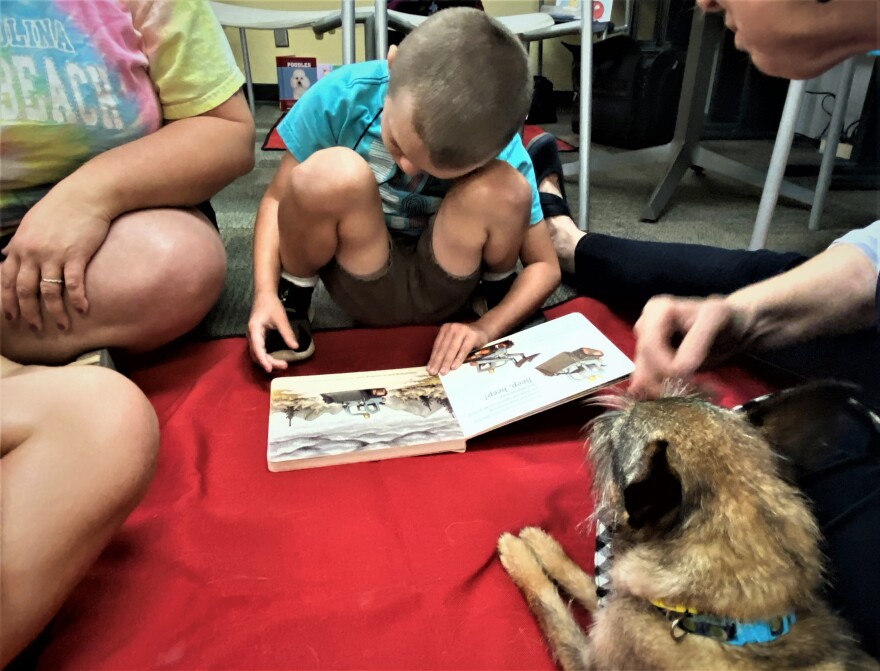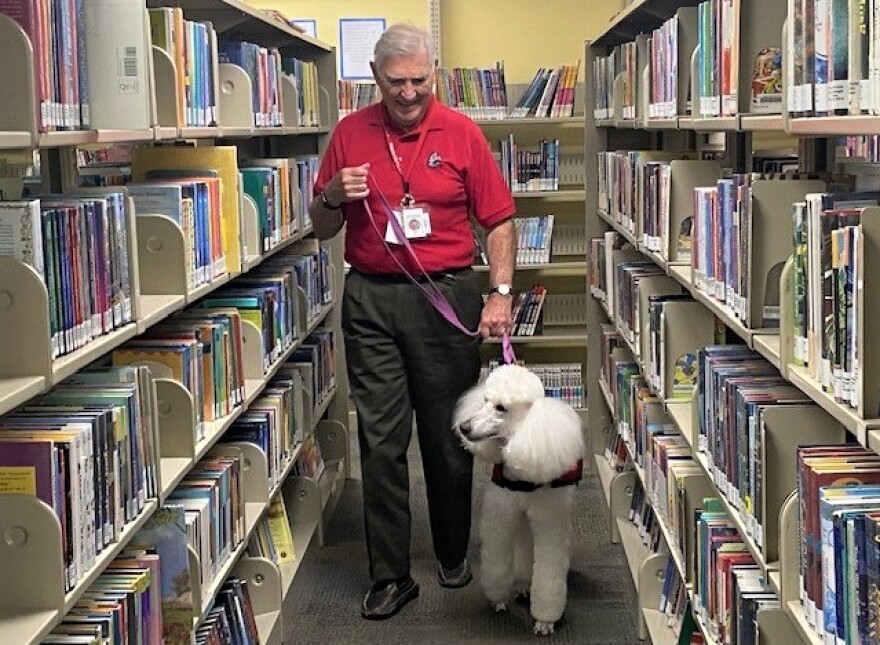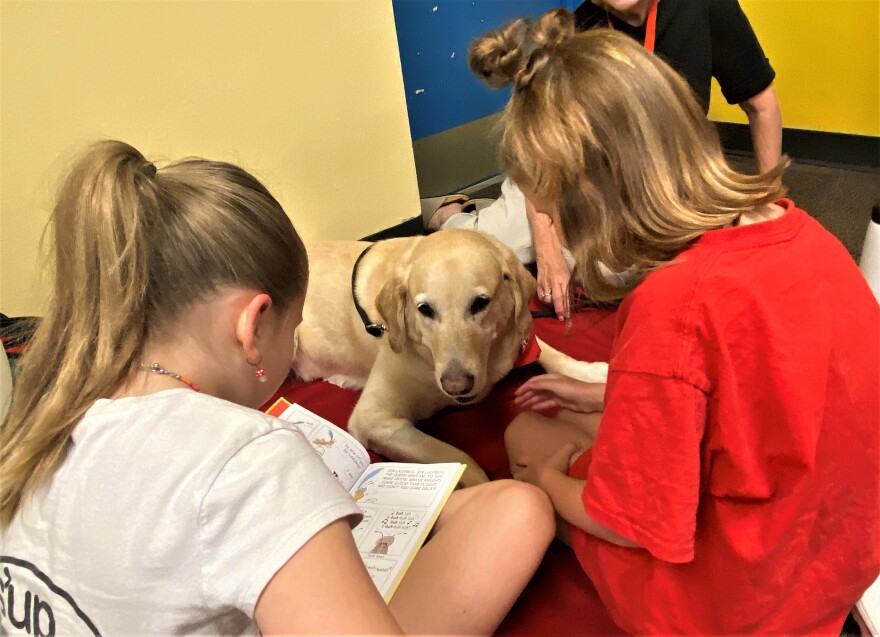Franny Zender, 7, wore a pink summer dress and matching pink headband to pull back her unbrushed blond hair, hair that tumbled down her back as if it had just dried after a day at the pool. Folding her legs beneath her, she opened a thin paperback titled "When Carrot Met Cookie" and adjusted the book so the gray standard poodle next to her could see the pictures.
“From the moment they met, Carrot liked Cookie,” Zender read softly. “Cookie was sweet, warm and cheerfully chipper!”
A few feet away, Fran Lancaster, a volunteer with Pets for Life, sat on a low stool holding the dog on a loose leash, her other hand draped around the dog’s back.
“Come as close as you can! This is Otto, so he’s about your age,” Lancaster said gently. “He’s been doing this for six years. He also goes to Children’s Mercy Hospital, and hospice, where people are sick.”
Lancaster was one of four volunteers from Pets for Life, the Kansas City nonprofit that brought four dogs to the Corinth Library on a recent June afternoon. Pets for Life provides physical and emotional support to children and adults by bringing certified therapy dogs into a variety of settings with trained volunteers.
Pets for Life is partnering with the Johnson County Library system, and other libraries throughout the metro, as part of the R.E.A.D program — Reading Education Assistance Dogs. R.E.A.D. is national literacy program designed to improve reading skills in children by having them read to animals. The program began in 1999 in Salt Lake City, and today works with thousands of volunteers and animals throughout the United States, Mexico, Canada and Europe.

In another one of four reading huddles along the wall of the Corinth Library children's floor, six-year-old Joey Billinger crouched in front of a small brown terrier who, by chance, was also named Joey. Billinger’s 12-year-old brother, William, sat nearby.
Volunteer Julie Krough, 66, rubbed the dog’s ears as the boy struggled to sound out the word “snowplow." The dog peered quietly over the top of the book.
Joey Billinger has autism, said his mother, Liz Billinger. Reading to an animal who doesn’t hurry him or correct every word is a relief.
“It’s neat for him to be able to be here and show his ability, even though he’s not a great reader,” she said.
Knowing they were coming to the Read To A Dog event inspired Joey to keep practicing.
“We’ve been struggling all summer to read,” said the mom. “Looking forward to this has helped him practice. It was an incentive.”

Corinth Branch Youth Services Librarian Megan Condon said Read to a Dog is one of the library’s most popular programs. One reason for its popularity is that it gives new or struggling readers the opportunity to practice their skills in a safe space.
“A lot of times when they practice their reading skills with their teacher, parents or siblings, they’re in a performing space, not a learning space,” Condon said.
“There’s the added pressure of having to do it right in front of the adult who knows how it’s supposed to be done. By reading to a dog or a cat, it takes the pressure off of that child to feel like they should already know how to do it.”

Emma Herring, 7, her twin sister, Addyson and their friend, Aubry Gibson, 7, were giddy after reading to Daisy, a tranquil golden retriever.
"It was amazing,” said Aubry. "She was so cute and I could tell she was listening to me read. I love dogs.”
The Herring twins had other insights about why reading to a dog is sometimes easier than reading to grownups.
“Like, dogs don’t really interrupt that much, because sometimes people have conversations while you’re reading," Emma explained.
Her sister, Addyson, agreed. “It’s different reading to a dog because they’ll just be listening to you.”





